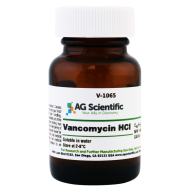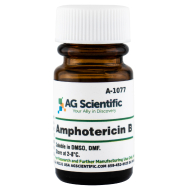Antibiotic resistant infections arise when bacteria and other microbes develop immunity against the drugs administered against them. Infections involving antibiotic-resistant strains grow stronger over time and become increasingly difficult to treat. According to CDC reports, over 2.8 million antibiotic-resistant infections occur in the US every year and have lead to a large number of fatalities.

Bacteria naturally develop immunities over time as humans prescribe antibiotics for various infections, leading to more potent strains that pose more significant threats to their hosts. Antibiotic-resistant strains play integral roles in the research and development of new treatments as scientists examine and discover ways to navigate existing resistances.
Here we review the Top 10 Antibiotic Resistant Infections at the forefront of medical research.
Mycobacterium tuberculosis (TB)
Mycobacterium tuberculosis (TB) is a bacteria that attacks the tissues found in the lungs, kidney, spine, and brain, leading to the condition known as tuberculosis. Some infected individuals may remain asymptomatic. The contagious infection spreads through tiny airborne droplets when sufferers cough or sneeze without protection. Drug-resistant TB may occur in some cases, leading to treatment complications and lower recovery rates. Antibiotic-resistant strains may result from inadequate TB treatments or transmission from carriers already infected with the bacteria.Tuberculosis was a widespread disease throughout Europe and various parts of the world in the 19th century. Over time, healthcare practitioners developed combined treatment strategies to combat and control the progression of the disease. The WHO aims to eradicate Mycobacterium tuberculosis by 2050 as it remains a leading cause of death from a curable infection.
Clostridium difficile
C. difficile is a gram-positive bacteria species that exist as spores with a prominent protective coating when living outside a host’s body. The invasive species favors gut systems, leading to a wide range of digestive problems such as diarrhea or life-threatening complications like severe dehydration, kidney failure, and damaged colons. The species thrives in the natural world, specifically in soil-based ecosystems.Individuals previously infected by C.difficile may experience recurrences in 1-2 months. Due to the prevalence of antibiotics prescribed against it, C. difficile has developed resistance against various commonly prescribed drugs. Some of these include erythromycin, tetracyclines, and penicillins. The transformation of metabolic pathways and alterations of antibiotic target sites are some detected mechanisms developed by C. difficile in bypassing antibiotic treatment.
Vancomycin-resistant Enterococci (VRE)
Certain strains from the Enterococcus genus of bacteria may develop resistance against the antibiotic vancomycin. Enterococcus exists within the soil and natural environment and may cause various health symptoms in infected individuals. The viral infection transmits through contaminated surfaces, commonly by touch.VRE may occur in individuals who undergo long-term vancomycin treatment or sufferers with chronic conditions such as kidney diseases and blood-related disorders. Medical providers may prescribe other forms of antibiotics in VRE treatment, usually upon receiving culture test results that track the response of antibiotic activity.
Methicillin-resistant Staphylococcus aureus (MRSA)
MRSA, also known as the MRSA Superbug, refers to a group of gram-positive, antibiotic-resistant bacteria that causes treatment complications in infected patients. MRSA results from common staphylococcus bacteria that developed resistance against a range of commonly prescribed antibiotics like amoxicillin, penicillin, and methicillin used in the treatment of staph infections. The symptoms of MRSA infection may include skin sores and irritations and severe infections of the lungs and bloodstream. MRSA may spread in unsanitary healthcare and living environments, resulting from poor hygiene practices. Researchers are continually developing new treatment methods in response to the rapidly adapting resistance of the MRSA superbug.Neisseria gonorrhea (Gonorrhea)
N. gonorrhea is a bacteria species responsible for gonorrhea, the second most reported communicable disease. The bacteria targets various mucous membranes located in the reproductive tract. Expectant mothers affected with gonorrhea may also pass the condition to their young perinatally, potentially causing blindness and blood infections.The bacteria species developed a gonococcal fluoroquinolone resistance, and medical practitioners have relied on the alternate cephalosporin treatment. Researchers continue to seek alternate treatment for N. gonorrhea in the event of cephalosporin-resistant strains. Frontline health professionals have implemented proactive screening and tests for patients affected by N. gonorrhea to observe and contain the spread of antimicrobial-resistant strains.
Carbapenem-resistant Enterobacteriaceae (CRE)
CRE refers to groups of bacteria strains resistant to carbapenem antibiotics. Some cases of the CRE group of bacteria may also exhibit resistance to all known antibiotic types, significantly reducing recovery success and posing high mortality rates. CRE superbugs may transmit antibiotic-resistance characteristics to other healthy bacteria within the infected body, potentially complicating future antibiotic treatments.The infection is most common in patients under a prolonged course of antibiotics and healthcare settings with inadequate hygiene during patient management practices (i.e., the lack of proper disinfecting, gowning/de-gowning, and sanitization procedures). Treatment for CRE may result in complications due to its resistance to the most commonly prescribed antibiotics.
Multidrug-resistant Acinetobacter
Multidrug-resistant acinetobacter, commonly of the A. baumannii species, is a rising cause of infection in healthcare settings. The bacteria causes a wide range of complications in affected individuals, ranging from pneumonia to wound infections and meningitis. These bacteria have gradually developed resistance to an assortment of antibiotic treatments, including the family of carbapenems typically prescribed for a wide range of ailments.Antimicrobial-resistant acinetobacter remains a significant concern in healthcare settings, with researchers relying on alternative treatments involving other drugs such as polymyxins and sulbactam. Researchers continue to seek new effective therapies, especially against carbapenem-resistant Acinetobacter baumannii. Ongoing research has identified potential success in the combination of β-lactamase inhibitors with apramycin.
Candida auris
C. auris is a type of fungus that has reportedly affected patients with compromised immune systems within healthcare settings. Patients affected by C. auris may not exhibit immediately visible symptoms (potentially leading to misdiagnosis) and may require a comprehensive laboratory test (molecular diagnostics). Noticeable infection symptoms may include persistent fever and sepsis, resulting from the fungus’ resistance to antibiotic prescription for diagnosed bacterial infections. Echinocandins are the most popular treatment against C. auris, with only 2% of reported cases resistant to the therapy.Some strains of C. auris may exhibit resistance to all known anti-fungal treatments (fluconazole, amphotericin B, and echinocandins). In such cases, healthcare providers usually prescribe multiple doses of antifungal solutions while keeping patients under close observation.
Vancomycin-resistant Staphylococcus aureus (VRSA)
S. aureus is a gram-positive bacteria that naturally targets the skin and areas within the respiratory tract. Severe symptoms of S. aureus infection include pneumonia and bloodstream disorders. Frequent antibiotic treatments against S. aureus have led to the rise of resistant strains, beginning with methicillin-resistant S. aureus (MRSA). Researchers relied on vancomycin treatment in resolving MRSA infections. Some strains of MRSA eventually adapted into vancomycin intermediate-resistant S. aureus (VISA), and recently resulting in VRSA with complete resistance against vancomycin therapies. In such cases, healthcare providers would implement vancomycin alternatives based on the in-vitro testing of VISA/VRSA strains. These alternatives may include telavancin, daptomycin, and ceftaroline.Drug-resistant Streptococcus pneumoniae
S. pneumoniae is a gram-positive bacteria species responsible for being the leading cause of meningitis and bacteria-based pneumonia. Some S. pneumoniae strains developed resistance to a variety of drug therapies, specifically penicillin antibiotics. Drug-resistant S. pneumoniae might also exhibit reduced susceptibility against alternative antibiotic treatments such as macrolides.Researchers have developed a vaccine against the bacterial infection, known as the pneumococcal conjugate vaccine (PCV). The vaccine reportedly reduces the effects of antibiotic resistance and prevents drug-resistant S. pneumoniae infections. Fluoroquinolones and beta-lactam antibiotics remain effective in the treatment of drug-resistant S. pneumoniae.



